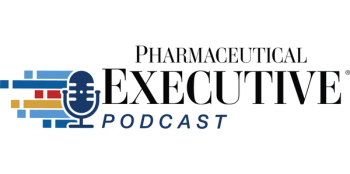"In pilot implementations, agentic systems have automated the vast majority of routine orchestration decisions, freeing brand teams and medical affairs professionals to focus on strategy, creative development, and high-touch stakeholder relationships rather than campaign logistics."
Autonomous Omnichannel: When AI Thinks for Pharma Marketing
As the pharmaceutical industry moves beyond rule-based omnichannel marketing, a new era of agentic systems is emerging, in which AI-powered agents collaborate with humans to orchestrate engagement, accelerate decision-making, and maintain regulatory compliance in real time.
The pharmaceutical industry stands at an inflection point. After years of building omnichannel capabilities by integrating platforms, creating modular content, establishing data pipelines, we've arrived at a new question: What if our omnichannel systems could think?
Not in the dystopian sense of machines running wild, but in the practical sense of intelligent agents working within strategic guardrails to orchestrate engagement dynamically, learning from every interaction, and adapting in real time.
This is the agentic future of pharma marketing and it's closer than most realize. It’s a future that demands we think critically about where automation enhances human judgment and where human creativity and ethical reasoning must remain central.
From Rules-Based to Agent-Based Orchestration
Today's omnichannel strategies, even sophisticated ones, operate largely on predetermined logic: If an HCP opens three emails, this triggers a webinar invitation. If a patient downloads a savings card, a reminder is sent in 30 days.
These rule-based workflows have served us well, moving the industry from siloed channels to coordinated journeys. But they're fundamentally reactive and brittle.
They can't spot emerging patterns across thousands of stakeholders, they can't negotiate optimal pathways when circumstances shift mid-journey, and they certainly can't learn from failure fast enough to matter.
Enter the agentic framework: a system where specialized AI agents act semi-autonomously, each with a defined role, working in concert to orchestrate omnichannel engagement. Instead of humans programming every possible scenario, we design agents that operate within strategic objectives and compliance boundaries, making thousands of micro-decisions that humans simply don't have bandwidth to execute.
The Four Pillars of Agentic Marketing
An effective agentic omnichannel system rests on four specialized agents, each bringing domain expertise to the orchestration process.
- The Insight Agent continuously mines real-world data, engagement signals, and behavioral patterns to detect opportunities invisible to human analysis. When it spots an HCP cluster showing early trial prescription behavior or identifies patients at high risk of non-adherence, it doesn't wait for a quarterly review but alerts the system immediately.
- The Content Agent assembles personalized experiences from modular content libraries, adapting tone, complexity, and format to match audience and context. It understands that a busy oncologist needs different messaging than a newly diagnosed patient, and it can personalize at scale without creating compliance chaos.
- The Channel Agent determines optimal touchpoints and timing, selecting from the full omnichannel arsenal—email, SMS, rep outreach, patient portals, webinars—based on stakeholder preferences and engagement history. If email isn't landing, it pivots to SMS. If digital touchpoints plateau, it cues human interaction.
- The Compliance Agent monitors every piece of content and every channel decision in real time, ensuring medical accuracy, regulatory adherence, and adverse event protocols. This isn't post-hoc review; it's embedded governance that allows the system to move fast while staying safe.
These agents don't work in isolation. They negotiate with each other, sharing intelligence and coordinating actions through a central orchestration layer. Think of it as an LLM-powered command center connected to elements of your ecosystem such as Adobe, Veeva, and IQVIA.
How It Works in Practice
Imagine this scenario: The Insight Agent detects that Dr. Martinez, a community rheumatologist, has written two prescriptions for your new therapy. This is a promising signal, but not yet habitual behavior.
The agent flags this to the Channel Agent, which recommends a three-touch sequence: a rep-triggered email reinforcing clinical data, followed by an invitation to a peer-to-peer webinar, with a patient starter kit offer as the third touchpoint.
The Content Agent assembles the email, pulling approved claims and visuals from the modular library, personalizing the subject line based on Dr. Martinez's previous engagement patterns.
Before deployment, the Compliance Agent scans the content, verifies claims usage, and confirms MLR approval status. Green light. The email sends and Dr. Martinez opens it but doesn't click through.
The Channel Agent notes this and adjusts: Instead of waiting 48 hours for the webinar invite, it escalates to a direct rep call, giving the field team context on the doctor's recent digital engagement. The rep has the conversation, and Dr. Martinez signs up for the webinar.
Post-webinar, the Insight Agent detects increased engagement and flags Dr. Martinez as a high-potential prescriber. The system automatically enrolls her in an advanced education track, and the cycle continues with each interaction feeding the agents' learning, refining future decisions.
This entire sequence happened with minimal human intervention. The brand team set strategic objectives ("grow community rheumatology adoption by 15%"). The agents executed within those guardrails, adapting the journey based on live signals.
The Business Case for Agents
The efficiency gains are compelling. In pilot implementations, agentic systems have automated the vast majority of routine orchestration decisions, freeing brand teams and medical affairs professionals to focus on strategy, creative development, and high-touch stakeholder relationships rather than campaign logistics.
But efficiency is only part of the story, as agility matters more. In traditional omnichannel operations, adjusting a journey might take weeks of updating rules, testing workflows, securing approvals. Agentic systems adapt in hours, sometimes minutes, because the agents operate within pre-approved frameworks and learn continuously from outcomes.
Scalability becomes almost trivial. Once you've built an agentic orchestration layer for one brand, expanding to additional therapeutic areas or global markets requires minimal lift. The agents bring their accumulated learning, their "playbook brain," to each new deployment, compressing the learning curve dramatically.
The Human Element
A common anxiety: won't agents replace marketers? The answer is no, but they will fundamentally change what marketers do.
In the agentic model, humans define strategy, set objectives, establish guardrails, and oversee high-stakes decisions. Agents handle the repetitive micro-decisions—such as which channel, what timing, and how to sequence—that currently consume enormous bandwidth.
Human creativity, strategic thinking, and stakeholder empathy remain irreplaceable. What changes is that these human capabilities get leveraged at scale rather than drowning in operational minutiae.
There's also a critical "human-in-the-loop" function: teams review and approve higher-risk outputs like new scientific claims or novel content creation. Agents propose; humans dispose. This governance model maintains trust and transparency while capturing the speed and intelligence agents provide.
Navigating the Complexity
The path to agentic omnichannel isn't without genuine obstacles that organizations must address head-on.
- Regulatory ambiguity around AI decision-making presents the most significant challenge. When an AI agent selects content or determines channel strategy, who holds accountability if something goes wrong? Current FDA and EMA guidance wasn't written with autonomous agents in mind.
- Forward-thinking organizations are documenting agent logic exhaustively, creating audit trails that demonstrate human oversight at critical junctures, and working proactively with regulatory bodies to establish acceptable frameworks.
- The compliance agent's role becomes even more critical here, not just checking boxes, but creating the documentation infrastructure that makes AI decisions defensible.
- Explainability requirements add another layer of complexity. Healthcare stakeholders and regulators increasingly demand transparency: Why did the system recommend this channel? How did it select this content? What data drove this decision? Black box AI won't suffice in pharma.
- The agentic systems that succeed will be those built on explainable AI architectures, where every agent decision can be traced back to specific inputs, logic chains, and approved parameters. This isn't just good governance. It’s essential for building organizational trust and maintaining the human oversight that regulators expect.
- Technology integration risks loom large for organizations considering agentic orchestration. The vision requires seamless connectivity between CRM platforms, content management systems, data warehouses, and marketing clouds—systems that weren't necessarily designed to work together, let alone support AI agents operating across them. Vendor lock-in becomes a real concern when your orchestration layer depends on proprietary integrations.
- The mitigation strategy: prioritize API-first architectures, demand interoperability from vendors, and build your agent layer with sufficient abstraction that you're not permanently married to any single technology provider. The goal is an orchestration brain that can adapt as your underlying tech stack evolves.
These obstacles are real, but they're not insurmountable. Organizations that acknowledge them early and build solutions intentionally will establish competitive advantages that late movers will struggle to replicate.
Building Toward the Future
The agentic omnichannel future won't arrive overnight, and it shouldn't. Organizations need to build foundations first: unified data infrastructure, modular content processes, integrated technology stacks, and cross-functional alignment.
These aren't optional prerequisites; they're the operating system on which agents run.
Start small by piloting a single agent—perhaps the Insight Agent mining engagement data—and learn how it performs. Add the Channel Agent next, testing its recommendations against human intuition.
Build confidence incrementally, expanding the agents' autonomy as trust grows and compliance protocols prove robust.
Establish clear governance frameworks. Every agent action should be logged, auditable, and explainable. This isn't just about regulatory compliance; it's about building organizational trust in AI-assisted decision-making.
Most importantly, invest in change management. Field teams, brand managers, and medical affairs professionals need to understand how to operate in an AI-powered ecosystem.
The technology is ready. The cultural shift takes longer.
A More Human Future
The paradox of agentic marketing is that by letting AI handle orchestration mechanics, we create space for more human connection. When systems intelligently manage the complex choreography of omnichannel engagement, healthcare professionals encounter more relevant messages at better times through appropriate channels.
Patients receive support that genuinely anticipates their needs. And pharmaceutical marketers get to focus on what humans do best: understanding people, crafting compelling narratives, and building trust.
But amplifying human judgment means preserving space for it where it matters most. Agents can optimize channel timing and content assembly, but they shouldn't determine whether a message is empathetic, whether a creative concept resonates emotionally, or whether an engagement strategy aligns with patient values.
These require human creativity and ethical discernment that no algorithm can replicate. The organizations that thrive in the agentic era will be those that draw clear lines: agents handle orchestration mechanics and pattern recognition; humans own strategic vision, creative direction, and the ethical guardrails within which agents operate.
Getting this balance right isn't a technical challenge, it's a leadership imperative.
This is the promise of the agentic omnichannel future—not replacing human judgment, but amplifying it. Not abandoning strategy for automation but liberating strategy from operational constraints.
Not making marketing more mechanical, but finally making it more responsive, more intelligent, and ultimately more human.
The question isn't whether this future will arrive. It's whether your organization will shape it thoughtfully or scramble to catch up.
The winners will be those who see agentic systems not as a replacement for human insight, but as the infrastructure that finally frees it. More efficient, yes—but more importantly, more human.
About the Author
Annemarie Crivelli is EVP, Managing Director of Omnichannel Enablement at BGB Group, where she leads the development and implementation of data-driven omnichannel strategies for pharmaceutical and biotech brands.
Newsletter
Lead with insight with the Pharmaceutical Executive newsletter, featuring strategic analysis, leadership trends, and market intelligence for biopharma decision-makers.




